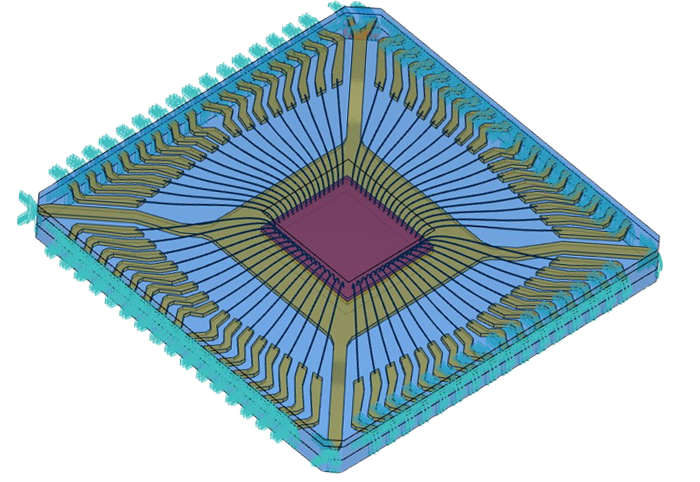
Simulation of encapsulation processes for integrated circuits
ESPECIALLY FOR OUR USERS
For the modern 3C products a trend toward smaller and lightweight integrated circuits (ICs) and also toward multi-functional ICs can be observed. This leads to more complex encapsulation processes. The aim is to reduce the amount of the used filling material and to encase increasingly exquisite IC structures. To control the increasingly complex process requirements and to reduce costly test programs, Moldex3D allows the simulation of several different encapsulation processes.
Moldex3D provides a variety of process analysis types which allow the simulation of the following encapsulation process types:
_ Transfer Molding
_ Molded Underfill
_ Capillary Underfill
_ Compression Molding
_ Embedded Wafer Level Packaging
_ Noflow Underfill/ Non-conductive Paste
Since the version 2021 the Encapsulation Component Wizard is available in Moldex3D Studio. This Wizard is developed specifically to reduce the modeling effort for encapsulation models. Here the diverse components of an encapsulation model can be easily created from 2D curves by specifying thicknesses and positions. The so created components can be automatically meshed with a hybrid mesh in a later step.
The materials for the individual components can be selected from the extensive Moldex3D material database. Also, creation of customized materials is possible.
Along with the common filling, curing and warpage analyses the encapsulation module provides two additional specific analyses which can be performed after (or along) the filling analysis. These are the “Wire Sweep (WS)“-analysis and the „Paddle Shift (PS)“-analysis. The WS analysis allows the simulation of the deformation of wires in the IC during the filling process. Several drag force models are provided for this analysis type. The purpose of the PS analysis is the deformation of the paddles due to interaction with the melt. The fluid-structure-interaction (FSI) for the PS analysis can be performed either one- or two-way. During the fast and efficient one-way FSI the influence on the flow due to deformed paddles is neglected. Should this effect be considered, the two-way FSI can be used.
After a successful encapsulation simulation, a variety of different result types is available for visualization. These results can help the user to optimize the process parameters during the development process and avoid costly trial-and-error testing campaigns. Among others the user can animate the filling progress and plot the temperatures, pressures, deformations and stresses for the individual components. Also, the residual distance between wires, wire intersections and the deformation of the paddles during the filling stage, as well as air traps and weld lines can be easily shown.
Deeper insights are of interest!
Please contact us: + 49 (0)241-565 276-0 or send us an email to info@simpatec.com.
